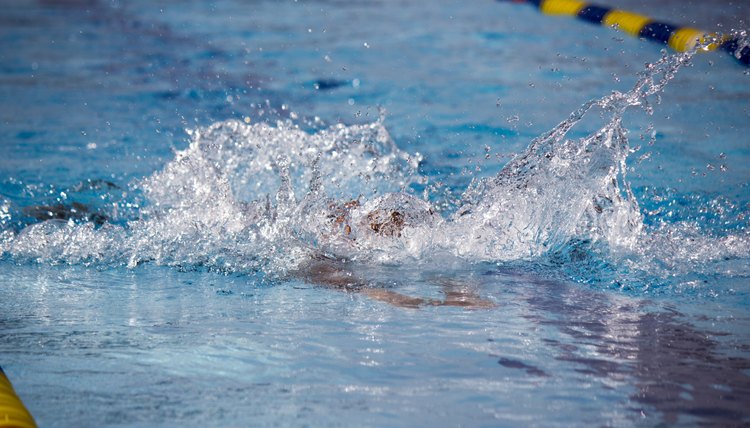What Is a Seed Time in Swimming?

Swimming officials use seed times to determine the most competitive match-ups. Seed times are so vital to a fair, efficient swim meet that they're required on most registration forms and nationally standardized on Official Verification Cards (OVC). Coaches usually handle recording and reporting seed times, but knowing how seed times work gives you a motivational advantage.
Definition
When a competing swimmer registers for an event at a swim meet, she submits a seed time. The seed time is the fastest time the swimmer obtained in the past for that particular event. This time determines who the swimmer competes against, which heat she'll compete in and which lane the officials assign to her. Some swimmers prefer to submit an average of their past times, while longer meets may use times from preliminary heats.
Standard Seeding
In most swim meets, swimmers with the slowest seed times compete in the first heat, and the following heats have swimmers with gradually increasing seed times. The swimmers with the fastest seed times compete against each other in the final heat of the event. A swimmer with the fastest seed time in his specific heat has the center lane, and the swimmers with the next two best seed times are to his right and left. Swimmers with the heat's slowest speed times have the outside lanes.
Circle Seeding
Meets with both a preliminary and a finals division -- usually taking place over two days or with a morning and afternoon competition -- may use circle seeding for the final heats. Instead of having the fastest seed times competing against each other in the same heat, the fastest seed time has the center lane in the last heat, the second-best time takes the center lane in the second-to-last heat and the third best time has the third-to-last heat's center lane. The next set of three best seed times take the lane to the center's right in each heat, respectively, the next three best times take the lane to the center's left in each heat, and so on.
Assignments
Meets are either deck seeded or pre-seeded. Pre-seeded meets have the participating swimmers assigned to their appropriate heats and lanes before the meet begins, while deck seeding takes place just before the heat, when the swimmers report to the meet's clerk. Deck seeding prevents empty lanes from absent or scratched swimmers but causes delays between heats.
References
Writer Bio
Kimberly Richardson has been writing since 1995. She has written successful grants for local schools as well as articles for various websites, specializing in garden-related topics. Richardson holds a Bachelor of Arts in English and is enrolled in her local Master Gardener program.
